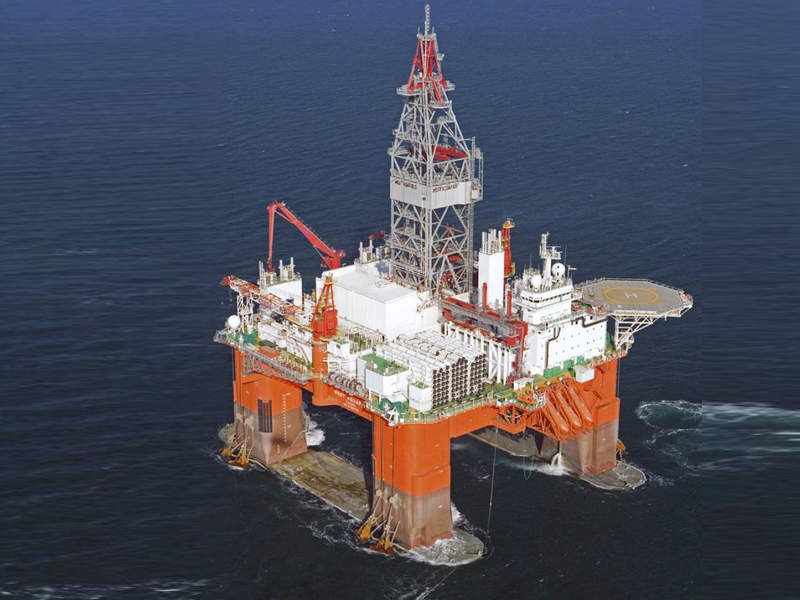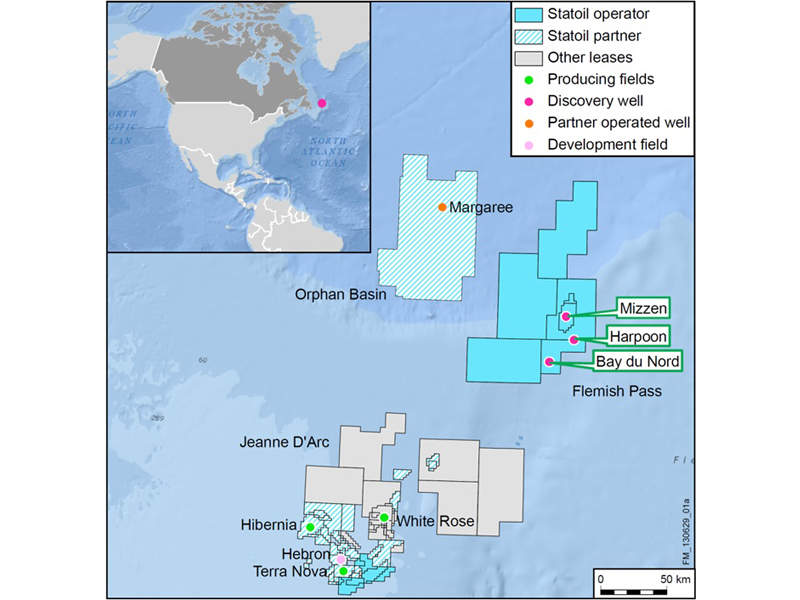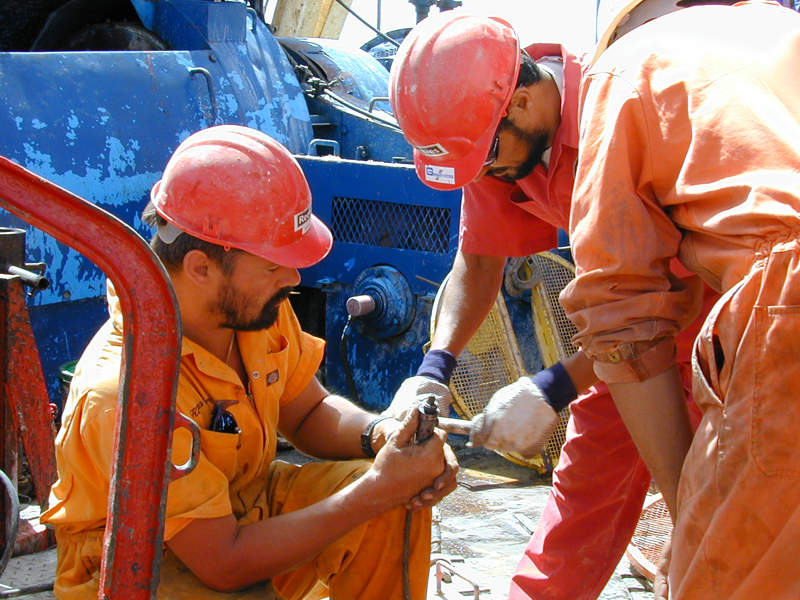Bay du Nord project includes the development of the Bay du Nord, Bay de Verde, Bay de Verde East and the Baccalieu fields located in the Flemish Pass Basin of the Atlantic Ocean offshore Canada.
Equinor Canada (formerly Statoil Canada) and Husky Oil Operations (Husky Energy) jointly own the project with 65% and 35% interests respectively, with the former serving as the operator.
The Bay du Nord project is currently in the initial stage of planning and development. The development activities for the project are expected to begin in 2020, while first oil is targeted for 2025.
Bay du Nord project location
The Bay du Nord project is located in the Flemish Pass region, approximately 450km offshore east-northeast of St. John’s, Newfoundland, Canada. The project development area, spanning 450km², includes the exploration licenses (EL) 1125, 1126, 1143 and 1154, as well as the Significant Discovery Licenses (SDL) 1047, 1048 and 1055.
The water depth around the proposed project area ranges between 1,000m and 1,200m.
Discovery and appraisal on Bay du Nord project
The Bay du Nord oil field was discovered during an exploration drilling programme conducted in the Flemish Pass area in 2013. The exploration and appraisal drilling programme was extended for a period of 19 months from 2015.
A total of nine exploration and appraisal wells were drilled during the drilling programme, which led to the discovery of the Bay de Verde and Baccalieu fields.
Bay du Nord project reserves
The Bay du Nord oil field and the Baccalieu field are estimated to hold mean recoverable resources, ranging between 300 and 600 million barrels of oil equivalent (approximately 47.7 million cubic metres of crude oil).
The fields contain light crude with a 36o API and a low gas-to-oil ratio.
Bay du Nord project development plan
The initial development will focus on the Bay du Nord oil field and the Baccalieu field in the SDL 1055 and EL1143. A conceptual plan was created as part of the initial development plan, which may be modified following further studies and design optimisation.
The proposed development plan includes the drilling of between ten and 30 wells using five to ten subsea templates. The drilling programme will be carried out over a period of three to five years. The drilling activity is expected to be conducted using either a semi-submersible drilling unit or a drillship.
The subsea templates, including individual satellite wells, will be tied-back using flow lines to a floating production, storage and offloading facility (FPSO).
The development plan proposes the use of pressure support through water and produced gas injection to recover the oil. The production life of the project is expected to range between 12 and 20 years.
Bay du Nord FPSO details
The proposed FPSO will be moored offshore in a fixed location and will have the capacity to handle crude oil production, storage and export, gas management, water injection, produced water management and other waste management.
The FPSO will have a design life of 30 years and an estimated production capacity between 94,000 barrels of oil per day (bopd) and 188,000bopd. It will also have a crude oil storage capacity ranging between 143,000m³ and 191,000m³ (between 0.9 million and 1.2 million barrels).
The water production rate of the FPSO will range from 30,000m³ a day to 50,000m³ a day.
Future development plans for the Bay du Nord project
The future development plans for the Bay du Nord project are expected to extend the core life of the field to a maximum of 30 years.
Potential development plans include the drilling of an additional 20 development wells, installation of up to five subsea templates, as well as drilling of satellite wells.










